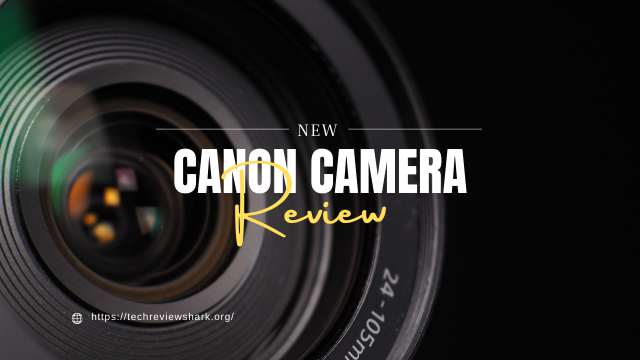Introduction
For many years, Canon Inc., a prominent player in the imaging and optical industries worldwide, has been at the forefront of camera technology. Canon camera, which was established in Japan in 1937, has continuously pushed the limits of photography and videography. This article examines the development of Canon cameras, their technological advancements, their effects on consumers and the industry globally, and a summary of their costs in various nations, with a focus on Pakistan.-
A Brief History
In 1934, Canon made its debut with the Kwanon, Japan’s first 35mm focal-plane shutter camera. Since then, the business has kept up the innovation pace, launching ground-breaking goods that have influenced the photography sector.
1. 1959: Saw the release of Canon’s first single-lens reflex (SLR) camera, the Canonflex, which was a noteworthy achievement.
2. 1971: New benchmarks for robustness and functionality were established by the F-1, a professional-level SLR.
3. 1987: The autofocus technology was revolutionized with the release of the EOS (Electro-Optical System) series.
4. 2000: The digital revolution in photography was made possible by Canon’s EOS D30, the company’s first digital SLR (DSLR) camera.
Technological Innovations
Numerous technological improvements have resulted from Canon’s dedication to research and development:1. Image stabilization and autofocus
1. With considerable advancements: Canon’s autofocus (AF) mechanism now provides faster and more precise focusing. Live view and video shooting capabilities have been improved by innovations like as Dual Pixel CMOS AF. In addition, Canon’s Image Stabilization (IS) technology eliminates camera shake, guaranteeing crisp photos even in dimly lit environments.
2. Utilizing Sensors
Canon has created a range of sensor technologies to meet diverse requirements. These advancements, which range from full-frame and APS-C sensors to sophisticated DIGIC image processors, guarantee high-resolution photos with superb color reproduction and little noise.
3. Optics and Lenses
The wide selection of EF and RF lenses offered by Canon is well known for its superb optical quality. Because of the company’s partnership with Canon Optron, a subsidiary, lenses with excellent clarity, low aberrations, and sturdy construction have been produced. Professionals hold Canon’s L-series lenses in particular in high regard because to their dependability and performance.
4. Video Features
Thanks to their notable advancements in video technology, Canon cameras are now highly favored by videographers. Post-production versatility and dynamic range have increased with the advent of 4K and 8K video recording and Canon Log profiles. Professional filmmakers are the target market for the EOS Cinema range.
Impact on the Industry
Beyond just its technological advancements, Canon has a significant impact. The company’s cameras have been utilized in a variety of contexts, including wildlife, sports, reportage, and portraiture. Canon has a devoted following of customers and has received multiple awards for its commitment to quality and innovation.
1. Expert Photography
Professional photographers all around the world trust Canon for its high-end cameras, such as the EOS-1D series. Their dependability, robustness, and sophisticated functionalities render them perfect for seizing pivotal moments in demanding settings.
2. Retail Industry
The Rebel series and other entry-level and mid-range Canon cameras have opened up photography to a wider audience. These cameras appeal to both aficionados and novices because they provide the ideal mix of sophisticated features and ease of use.
3. Superb Cinematography
Many movies and television series have been made possible with the EOS Cinema series. Because of its dedication to providing excellent video performance, Canon has become a mainstay in the entertainment sector.
Pricing Overview
Canon cameras are sold all over the world, with costs ranging according to the model, the location, and the state of the local economy. An overview of Canon camera costs around the world, with a particular emphasis on Pakistan, is provided below:
Americas
Price of the Canon EOS R5: around $3,899
The Canon EOS 90D costs about $1,199.
EOS Rebel T7i from Canon: around $749
United Kingdom
The Canon EOS R5 costs about £4,199.
The Canon EOS 90D costs about £1,199.
The Canon EOS Rebel T7i costs about £849
Australia
Cost of the Canon EOS R5: around AUD 6,899
Canon EOS 90D: Around 1,899 Australian dollars
Price of the Canon EOS Rebel T7i: around AUD 1,199
Pakistan
Canon cameras can be purchased in Pakistan from accredited dealers and internet merchants. Due to availability, currency exchange rates, and import taxes, prices may differ.
Around PKR 1,050,000 to PKR 1,200,000 for the Canon EOS R5.
Approximately PKR 250,000 – PKR 300,000 for the Canon EOS 90D
Canon EOS Rebel T7i: Around 200,000 to 150,000 PKR
Challenges and Future Directions
Canon nevertheless confronts difficulties in a market that is getting more and more competitive. Continuous innovation and adaption are necessary due to the advent of smartphone photography and competition from other camera makers.
1. Technology without mirrors
With the EOS R series, the group has made significant advancements in the mirrorless camera market. These cameras preserve the quality and performance for which Canon is renowned, while providing the benefits of mirrorless technology, such as small size and sophisticated electronic viewfinders.
2. Environmental Projects
Canon is dedicated to sustainability and minimising its influence on the environment. The company prioritizes recycling initiatives, sustainable manufacturing techniques, and the development of energy-efficient products.
3. Computational photography and AI
Computational photography and artificial intelligence (AI) are the directions that photography is headed. Canon is making these technological investments in order to improve picture processing, increase the precision of focusing, and provide cutting-edge features that encourage creativity and ease of use in photography.
Conclusion
Canon has a long history of invention, technological leadership, and dedication to quality in the camera industry. Canon has had a significant impact on the development of photography and filmmaking, from developing autofocus systems to improving digital image technologies. The organization is committed to expanding the frontiers of imaging technology even as it navigates the opportunities and challenges of the future.
Canon’s history is a monument to its fortitude and vision, and its cameras will surely keep inspiring future generations of photographers and filmmakers.



